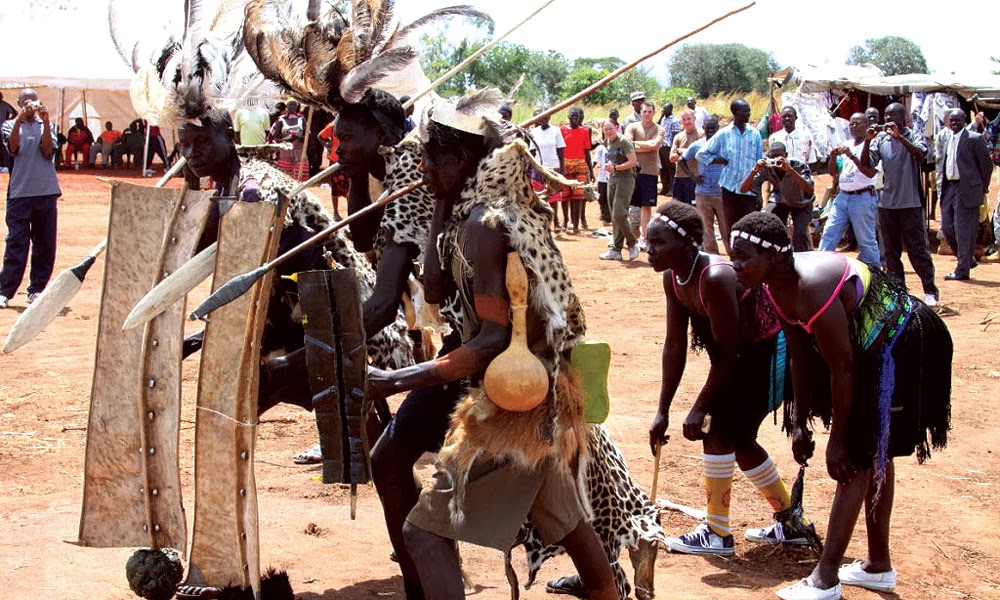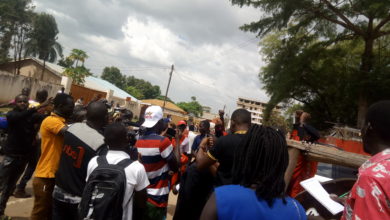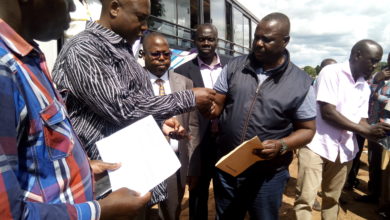Why do we continuously experience long periods of drought and flooding when there are rain makers in our community?
That is a question; I sought to find answers to on one scorching Tuesday during a trip to Idure village, Lakwaya Sub County in Omoro district located in Northern Uganda.
https://www.blackstarnews.com/global-politics/africa/acholi-rain-makers-decry-lack-of-support-to-facilitate-their
OMORO-UGANDA: I travelled to Idure after I was tipped off about the presence of rain makers in the area.
At around midday, I arrived at the home of the late Paulina Okeny, a rain maker.
I am welcomed into the compound first by the sight of six grass thatched huts dotted on the compound, a permanent house and some chicken roaming around, probably looking for what to eat.
The homestead is surrounded by a small forest of sorts.
A young man aged about 20 years, I later found out is called Oyere Okeny welcomed me and led me to the rain makers I was looking for.
A young woman aged about 19-years came of one of the six grass thatched huts, carrying with her a tray of fresh beans.
Waiting for me, wasSilvio Olobo, the Chairperson of Puranga rain makers sitting on a stool, chatting with Kasilo Opobo, his deputy.
We exchanged greeting and some pleasantries before asking Olobo my first question which was why the region experiences long periods of drought yet they are able to cause rain.
In 2020, most parts of Pader and Agago experienced floods which destroyed several acres of food crops.
In May-June 2021, the sub region experienced a dry spell when it should have been raining.
“There has been change in weather patterns. People have put blame on tree cutting but the truth is that people have abandoned the traditional ritual of rain making,”
“Just give us what it takes to perform the ritual. When we perform the ritual for example in January, it will rain until July and then from July to December. There will be no complaint of change of weather patterns,” he said.
Olobo said that depending on the season, they can command heavy or moderate rains.
“We can command it to rain twice a week during planting season or we can instruct that it should rain only at night to avoid interrupting normal planting season. We do not want a storm,” he explained.
Olobo said a committee of ten people including himself is in charge of rain making.
He pointed at one of the six huts in the compound saying it is where the tools for making rain are kept.
He said that strangers areforbidden from going near the hut where a pot (Agulukot-meaning pot of rain) which contained three small stones is kept.
“The colour of the stones changes to Red when it is raining and white when it is not raining. The inside of the of the hut gets covered with a rainbow when it is raining. Lightning sparks from the pot,” Olobo explained.
A spear, a drum, a wooden calabash, a gourd containing Simsim oil are the other times used for the rainmaking ritual.
Unfortunately, they could not carry out the ceremony because they did not have other requirements like a black hen, a black cock which must be brought to them by the Puranga clan members at the beginning of the planting season.
“In cases of long droughts, we require a black hen, black cock, black ram and a black bull,” Olobo said.
The rainmakers divide their roles which include beating the drum, fetching water and slaughtering the chicken among others according to clans.
During the ceremony, an old woman is chosen to cook food for the rainmakers.
The food is usually unsalted chicken or beef pasted with Simsim called “Lajimo” and millet bread.
Olobo said that, “After the rainmakers finish eating, it will rain heavily. When there is a flood, the same ritual is performed but this time a white hen and a cock are slaughtered.”
How rainmaking started
In an interview with Opira Amollo-an elder and member of Odokotaya clan in Puranga chiefdom explained that over 200 years ago, a strange man with an ulcer on the leg appeared in the home of the Puranga chief called Rwo Ogwal Abwang.
He spent three days looking for someone to treat his wound but no one was willing.
However, on the third day, the chief’s wife offered to clean his wound which had a bad stench.
“The chief’s wife carried hot water in a wooden calabash called “wee” in luo to the edge of the compound and asked the strange man to go and have his wound cleaned and dressed,”
To her surprise, the man told her that what he had was not a wound but rather three stones that make rain.
“Hethen instructed her to bring a new clay pot which has never been used before, two hens-one white and another black, two rams-one white and another black and a black bull.
“When they were brought, he unraveled the material wrapped around the wound to reveal the three stones which were dripping with water. He then performed a ritual which caused it to rain heavily,” Opira Amollo explained.
He said that in 1911, the son of chief Ogwal Abwang called Oyere was arrested by the British colonial masters who also forcefully took away the three rainmaking stones from him.
His arrest, according to Opira Amollo caused a heavy downpour that lasted three days.
The colonialists had no choice but to release Oyere and handed back the three stones after the third day with no further punishment.
Opobo explained that weather patterns have been changing since 2007because unscrupulous people have been tampering with the Agulu-kot.
“Some two young men sold the pot containing the three stones to unknown business men in exchange for Shs. 10 million in 2007,”
The young men later confessed to have sold the stones after being caned, according to Opobo but that the stones mysteriously returned after a ritual was done.
Opobo says that the three stones have stolen more than three times and each time, there has been disaster like lightning strikes, heavy storms and loss of lives.
He cited 2010 where the stones were robbed at gun point.
“That same year, there was lightning at Pece War Memorial Stadium in Gulu killing three people, injuring six others during an athletic competition for primary schools,”
He said 38 people were struck by lightning in Nakasongola district forcing those who had stolen the stones to abandon them.
Opinions
Alfred Oryema, a 57-Year-old resident of Kabedo Opong in Bardege-Layibi Division, Gulu City believes that the rain makers have power to make rain.
“When the traditional ritual is made, Acholi and the whole of Uganda will experience rain and good harvest of crops,” Oryema said.
He adds that in Lamwo district where he hails from, they have rain makers who are always perform rituals for rain to fall.
Grace Achan, 27, a secretary at Gulu District Local Government also believed that rainmakers have powers to make rain.
“I have witnessed rainmakers stop rain from disrupting function,” she said.
William Omony, a senior meteorologist at the Uganda Meteorological Authority said that the Ministry of Land and Environment convened a workshop at Bomah Hotel in April with Acholi traditional rain makers to include them in climate mitigation.
Omony says indigenous knowledge is fundamental in fighting green gas emissions which are responsible for climate change.
“In our meeting, the traditional rainmakers in Acholi Sub Regiontold us that the there is no rain because majority of their colleagues have died without passing on the knowledge to young people,”
He however said that the rainmakers need to be supported through the ministry of Environment so that they can implement their activities.





